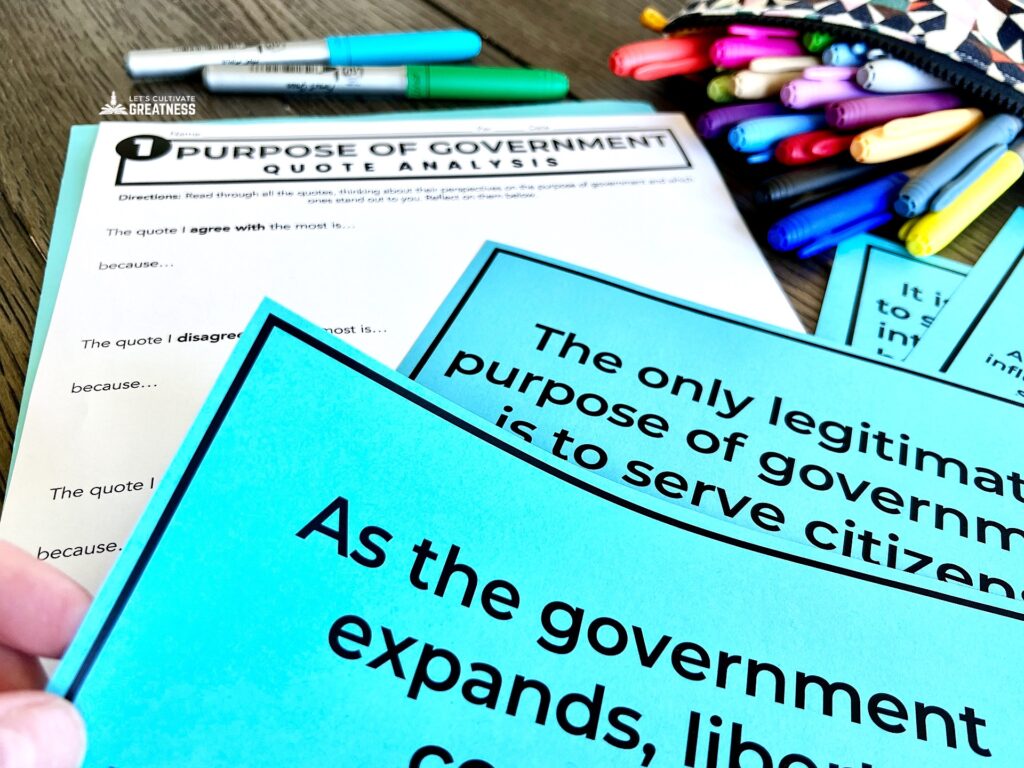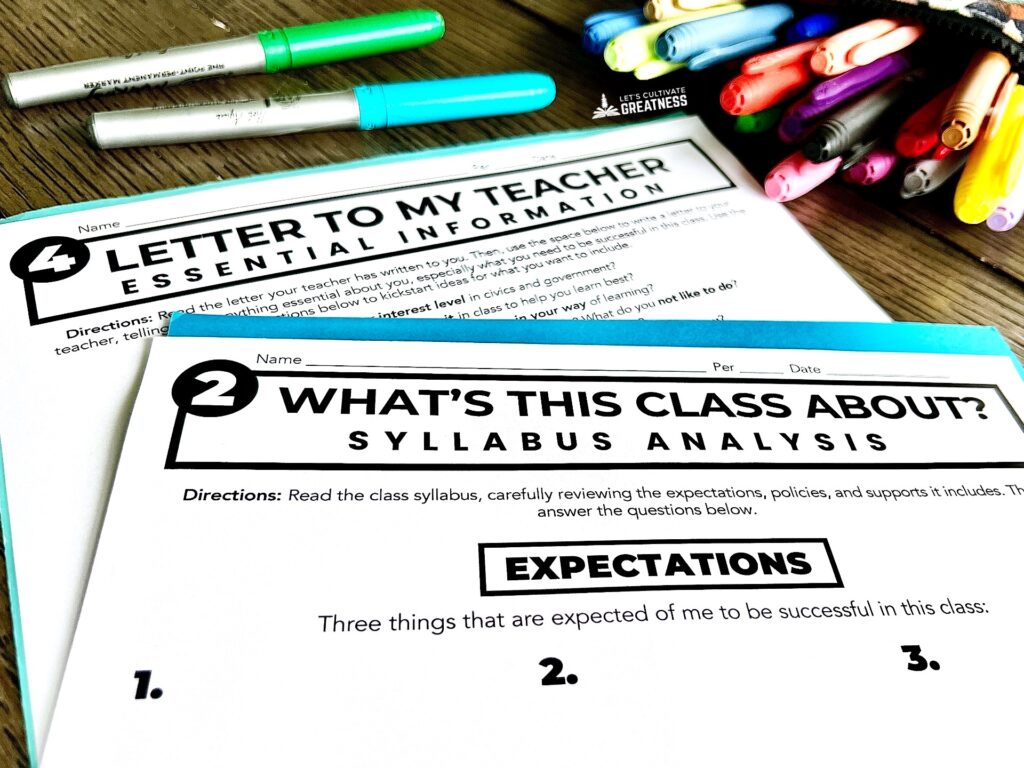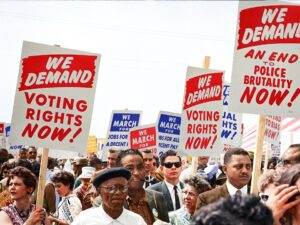Once kids are in high school, there usually isn’t time or the need to spend a whole week solely doing relationship-building activities.
But you should still do something those first few days between finalizing the seating chart and your first unit. I might tweak my “Welcome to Civics class” activities a little year to year, but here are my tried-and-true favorite ones to do to establish a great foundation.
These will help introduce you, your class policies, and some of the content they’ll learn. And they should all work great for either middle or high school.
Feel free to pick and choose a few activities or grab my First Day Civics Stations Activity Kit, which has micro-versions of many of these for students to complete in a self-paced stations set-up.
What is Government Brainstorm
Writing “What is government?” on the board and asking students to write an answer seems straight out of a John Hughes film. So definitely don’t do that. Instead, I add a bit of a twist to this.
I print the government on several slips and hand them out to groups to draw what they think best depicts the concept. I then gather the drawings for us to examine.
The trick is that they don’t know they all have the same concept, so all the drawings are of the same concept. Eventually, someone will guess it by the time I’ve shared the third or fourth image with the class.
This activity leads to far more interesting ideas that students generate about “what is government?” both in creating their nonverbal depictions and examining the similarities and differences among the images as a class.
If you want to try this Day 1 “What is Government?” drawing lesson, it’s free in my shop!
Purpose of Government Quotes
Gather several quotes from Enlighten thinkers like Hobbes and Locke, founders like Hamilton and Jefferson, and contemporary figures that discuss the role and purpose of government.

Have students read through them and discuss them by posing questions like:
- Which quote do you agree with the most? The least? Why?
- Which quote sparked a wonder or question? What was it?
- Which quote makes the most sense to have been said by who said it? Why?
- Which two quotes seem to be in the most agreement? The most disagreement?
- Have beliefs about the purpose of government changed over time? How so or not?
Citizenship Test Questions
The US Naturalization Test is a no-brainer way to assess both students’ incoming civics knowledge and their growth over your course. Out of the test bank of 100, about 60 are government-focused questions.
You can read my blog post on how I incorporate the Citizenship Test as a key aspect of my Civics class, which includes giving a practice test as one of the first activities of the year.
Of course, students usually do terribly on the test, so it makes for a great conversation starter about civic responsibilities and a great way to measure learning growth concretely.
Photos of Government Officials
Gather up the portraits of government officials from all three branches and from local, state, and national governments. Have students try to identify their names and titles.

You can also do this with government actions, like photos of the president signing a bill with prominent Congresspeople standing around or giving the State of the Union address in the House Chamber. Ask students to identify the people in the photo and what they are doing.
These make great informal assessments to do again at the end of the semester for students to see their growth!
Political Cartoons
Find a few cartoons covering hyper-relevant current political events or more enduring themes about government to hook them into why being an informed and engaged citizen is essential.
I’ve developed a fail-proof POPES method to help students analyze any cartoon. As you analyze political cartoons with students, emphasize why these events are consequential and why these themes are central to American politics.
Be sure to grab my FREE Political Cartoon Analysis Kit for a complete how-to guide on the POPES method with student materials.
Class Logistics
Of course, you still want to cover your syllabus and class expectations. There are many ways you can do this, but I like to have students explore my syllabus to review class policies and expectations as one station activity and in another station, have them explore the various units and inquiry questions we’ll be studying.
I also like to have students write a quick letter to me introducing themselves and letting me know any essential information.
Lastly, I have students do a quick scavenger hunt through our LMS to familiarize themselves with where things are.
All these also make easy stations for students to circulate through.

I hope these ideas give you a great start to your Civics class! Grab my First Day Civics Activity Kit for a done-for-you stations kit of many of these activities mentioned here.
If you’re new to teaching Civics and need everything, check out my full Civics & Government curriculum.





